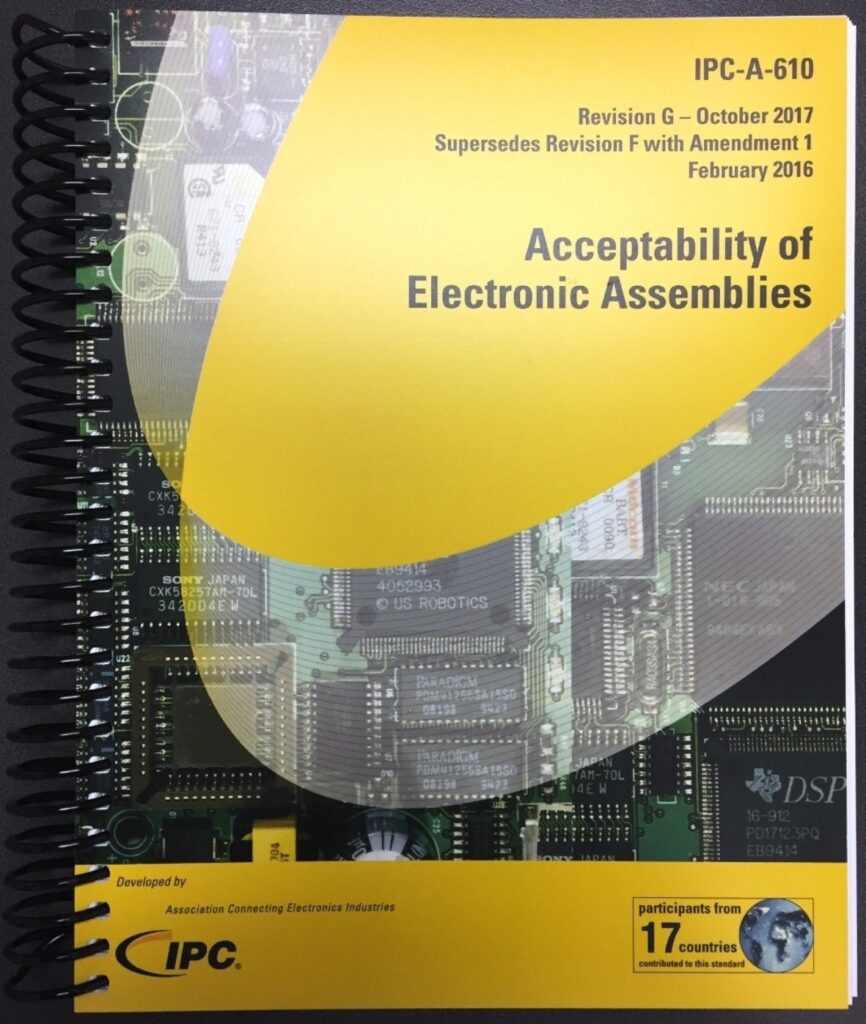IPC-A-610: The Standard for Acceptability of Electronic Assemblies
IPC-A-610 is an internationally recognized standard that establishes the criteria and guidelines for evaluating the acceptability of electronic assemblies. It provides a common framework for manufacturers, assemblers, and inspectors to assess the quality and reliability of electronic products.

Importance of IPC-A-610
The IPC-A-610 standard plays a crucial role in ensuring the consistent quality of electronic assemblies. By adhering to the guidelines outlined in the standard, manufacturers can produce reliable and high-quality electronic products. This is particularly important in industries such as aerospace, automotive, medical devices, and telecommunications, where electronic assemblies are used in critical applications.
IPC-A-610 covers a wide range of acceptance criteria for various aspects of electronic assemblies, including component placement, soldering, cleanliness, mechanical assembly, and coatings. It addresses both surface mount and through-hole technologies, providing a comprehensive set of requirements for different types of electronic assemblies.
Acceptance Criteria
The IPC-A-610 standard classifies acceptance criteria into three levels: Class 1, Class 2, and Class 3. Each class represents a different level of workmanship quality and reliability requirements, with Class 3 having the highest standards and being suitable for the most demanding applications.
The standard defines specific criteria for different aspects of electronic assemblies, such as solder fillet, component spacing, lead protrusion, solder joint visibility, cleanliness, and mechanical assembly. It includes detailed illustrations and descriptions to help inspectors and assemblers determine whether an assembly meets the specified requirements.
Benefits of IPC-A-610
The adoption of IPC-A-610 brings several benefits to the electronics industry:
1. Consistency: IPC-A-610 provides a common set of acceptance criteria that ensures consistency in evaluating electronic assemblies across different manufacturers and locations.
2. Quality Assurance: By adhering to the standards outlined in IPC-A-610, manufacturers can improve the quality and reliability of their electronic products, reducing the risk of failures and customer complaints.
3. Customer Satisfaction: Meeting the IPC-A-610 standards enhances customer satisfaction by delivering products that meet or exceed industry-accepted quality levels.
4. Training and Certification: IPC offers training and certification programs related to IPC-A-610, allowing individuals to gain expertise in assessing the acceptability of electronic assemblies and become certified IPC specialists.
Conclusion
IPC-A-610 serves as a vital benchmark for evaluating the acceptability of electronic assemblies. It provides manufacturers, assemblers, and inspectors with a common language and guidelines to ensure consistent quality and reliability in the production of electronic products. By adhering to IPC-A-610 standards, the electronics industry can deliver high-quality assemblies that meet the demands of various applications, ultimately enhancing customer satisfaction and industry-wide standards.
Related Articles:
 Sam
Sam
Discussions
Become a Hackaday.io Member
Create an account to leave a comment. Already have an account? Log In.